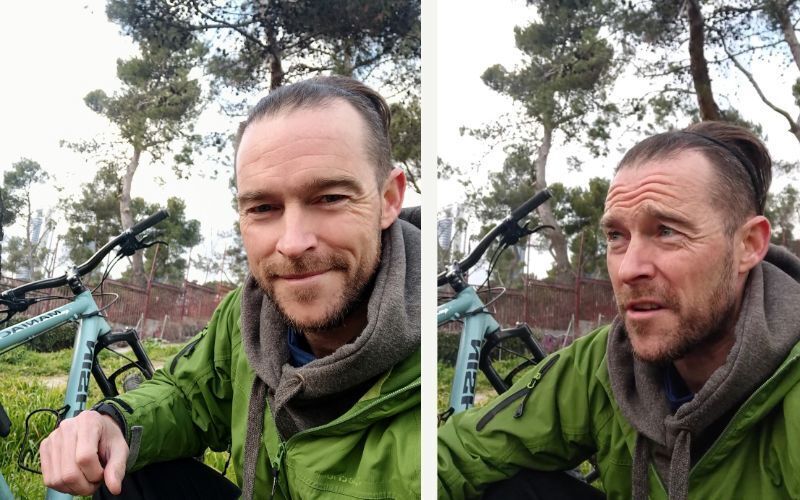Day 24 - Did you Know That MLK was a Practitioner and Huge Proponent of Yoga?
I would add many other well-known world figures to this equation, who have walked or currently walk the talk of Peace.
Are these following concepts and guidelines ones that we would connect with MLK, or have heard mentioned numerous times amongst hundreds of his speeches, cerimans, and gatherings...?
Non-violence, truthfulness, not stealing, non-greed, non-indulgence, or non-possessiveness. Did we hear him preach about the need for more patience, forgiveness, fortitude, and perseverance with the aim of reaching the goal of peace for ourselves and others, practicing compassion, non-hypocrisy, sincerity and appreciation, and gratitude for our interdependence and interconnectedness?
Well, I would certainly associate all these very much with MLK, through his writings and his teachings, and this is why I describe him as a Yogi, maybe who didn't know it.
Why? As these, all make up the first of the 8 limbs of yoga, known as the 'Yamas' (in Sanskrit), and each limb is built on the foundations of the previous.
Are they what we would today, associate with paying good money to go to a heated yoga studio to sweat, feel good, breathe well for an hour or so, and move mindfully? I imagine not, but the 'asanas' (the physical postures and holds) or the yoga movements are just a small part of Yoga, and they alone, I would argue, don't lead to sustained peace. In fact, the argument could be made that the Western Version of Yoga (an activity to feel and look better) could even be a counter-challenge to peace.
I say this as someone who quit his work almost a decade ago, to rehabilitate after a bad accident on my bike, that stopped me in my tracks, completely and left me to concoct and reflect for several months. My new vision and mission were to learn and practice yoga. And I did so with intensity and purpose for a sustained period, aspiring to share and teach yoga as my contribution to peace. I still believe in the incredible potential of Yogic Practices and many other indigenous practices from around the world but not as they are sold and capitalized on, in our western cultures today.
I did take my qualifications, and I do still practice, but I realized that in order for me to realistically sustain myself and my family as a yoga instructor, I would almost surely have to buy into a system that I couldn't totally connect with. Making people feel ok for taking actions that may not be ok. This was going against the first limb of yoga itself.
Let me explain.....
It may sound even a bit extreme, but so too did MLK and his peers when striving for peace. I feel it's time we stopped offering yoga classes to the 1% (which, in the main, are the cohort of society who can afford financially and time-wise to pay to receive yoga instructions) to feel ok about acquiring wealth and lifestyle at the cost of those who may have somehow, been taken advantage of. Of course, I should say that this is not the case for everyone taking yoga today but certainly a lot of those from my personal experience. Yoga can act as a cushion or massage to the conscience and can numb valueless behaviors. Yoga, however, in its truest form and many other indigenous practices, can and I appeal, must awaken the consciousness and the awareness of the global inequities that exist, question one's wealth and how they received it, and activate the innate compassion. In other words, no more yoga-like practices to make people feel ok for taking actions that are not ok. That's not what yoga or any revived ancient practices are about; quite the opposite, in fact.
So, repeating myself, the Yamas are the first of the Eight Limbs of Yoga. Practicing the Yamas encourages us to be conscious of our thoughts and actions. By strengthening our awareness, we can make healthier choices and avoid negative thought patterns.
Yamas means "restraint" or "reigning in" in Sanskrit. In yoga philosophy, the Yamas are those things we should refrain from doing. When you use the Yamas to improve your self-control (restraint) and purify your intentions, your character is improved.
The Yamas should not be confused with the Niyamas, which is the second limb on the path to enlightenment.
Together, the Yamas and Niyamas of yoga can be defined as moral codes or ethical principles that guide us in our journey through life and to spiritual awareness.
It's not a 90 min break in our day to make us feel all right, while potentially, continuing to live in a messed-up way or refusing to recognize how we can genuinely make inroads to creating a more peaceful society. It's the opposite, in fact, an opportunity to be at peace and practice peace.
Why are we not given the full picture or full practice? Why rock the boat if profits are being made and folks are enjoying and benefitting from their Shavasna, image-inducing, mind-resting sessions? But is it even Yoga without the first limb being practiced in every session?
So, what are these things I'm talking about again? Yamas or llamas (no, they are the cute, cuddly Peruvian animals):
Ahimsa (non-violence)
Satya (truth)
Asteya (non-stealing)
Brahmacharya (non-indulgence)
Aparigraha (non-possessiveness)
A further five Yamas have been described in various other texts:
Ksama (patience, forgiveness)
Dhrti (fortitude, perseverance with the aim to reach the goal)
Daya (compassion)
Arjava (non-hypocrisy, sincerity)
Mitahara (measured diet)
I finish with two questions, and maybe this written rant can be followed up as there still feels so much to question, process, and share.
How do we get the millions practicing yoga every day, exposed to these main guidelines?
How can they be activated once we leave our heated yoga studios? It starts with me, and it starts today.
Shane O'Connor


